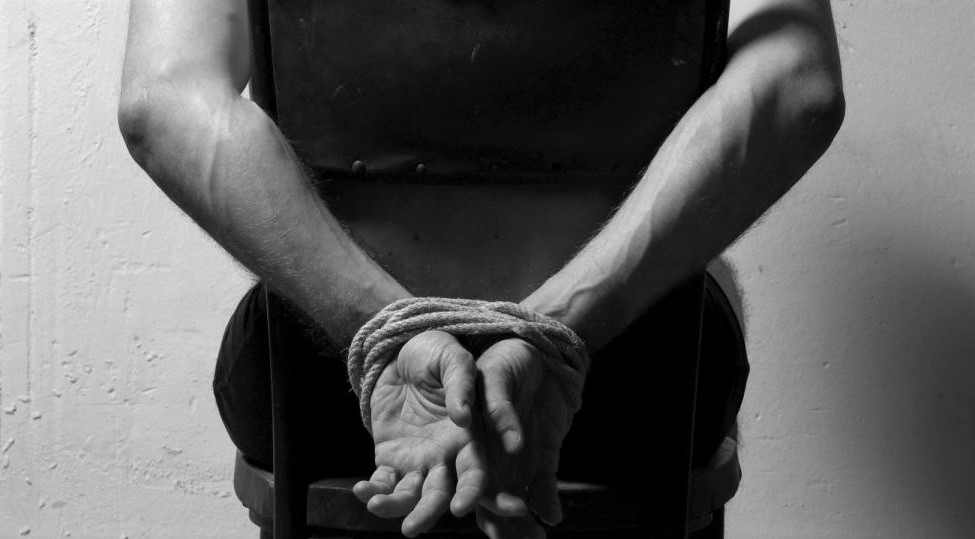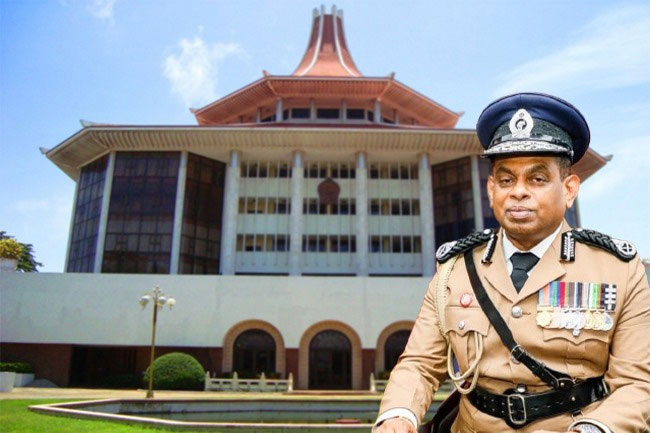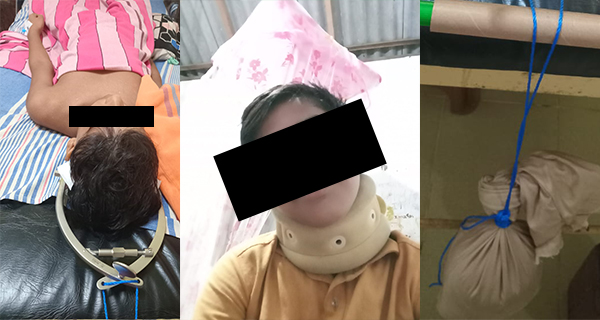- Ajith Perakum Jayasinghe
I have been a torture victim. It was not for hours or days. Not for months too. It can even be counted in years. It started in May 1989, worsened by the end of the year, and began to be slightly better in mid-1990, but continued until late 1992, the time I was freed after an enforced rehabilitation.
I was an activist of the rebel People’s Liberation Front (JVP) since 1984 after the party was banned unfairly. JVP converted into a militant movement in early 1986 and resorted to violence on the path to power. The party conducted robberies, attacks, burning property, torture, political killings, and attacks against the military, paramilitary, and police. Who started the violence is immaterial, the government, opposition, leftists, police, military, paramilitary, public service as well as the JVP not only added fuel to the fire but poured salt on the wound also.
By the end of 1989, a breakthrough was imminent and ultimately it was the annihilation of JVP. Almost all its leaders were executed illegally. Most of them were arrested, grilled, and then shot dead. JVP leader Rohana Wijeweera was tortured and burnt alive. The common alibi of the time was one of the rebels’ accomplices shot and killed him and the accomplice was also shot dead by police or military in their effort to save lives.
I was taken into custody with a group of activists in May 1989 in Matara. The time was a brief period the emergency regulations did not function in Sri Lanka. President Premadasa, the successor of President J.R. Jayawardena had discontinued emergency regulations. He held negotiations with the Tamil rebels and wanted to settle the insurrection in the south too. One of my colleagues arrested with me was a student at the University of Ruhuna. He was immediately freed due to student protests. The rest three persons including me were sent to the notorious Eliya Kanda torture center.
Eliya Kanda was not a legal detention place. It was run by the Army intelligence of the Matara district military command which was headquartered in Matara Fort. It was initially managed by a team of 4th Light Infantry led by a captain who was soon promoted to the rank of Major. The Officer Commanding was a demoted notorious sub-lieutenant. The officials used torture methods like hanging people either by legs or by thumbs of the backward wrung hands, beating with bludgeons, electrocuting, and sinking the head in water tanks.
There was a very tender young lance corporal in his mid-twenties who liked to wear green colour Batik shirts. He recorded statements often at a corner of their billet from the suspects electrocuting them with makeshift electrodes. He was the one who invented shopping bags as torture equipment. He took a couple of shopping bags one inside of the other, put them over the head of the suspect, and held the mouth of the bag tight under the chin of the suspect, so as it is airtight. After several breaths in and out, the man starts to suffocate. The torturer released the grip only when the suspect says ‘Kiyannan’ i.e., ‘I will say.’ Soon this guy improvised this gadget using several drops of petrol inside the inner shopping bag.
I was severely beaten as soon as I was taken to this place and they split my ear drum. I was kept handcuffed and blindfolded. My ear was infected and I covered it with the piece of cloth torn from my sarong which I was using to blindfold myself. Every morning when I removed my blindfold, a greenish-grey sticky clump of pus was there. I still feel the stench of my own wound in the ear. I was young and healthy and with time the wound naturally healed saving my hearing.
I was blindfolded for about eight months continuously. The piece of cloth was removed only for eating and washing the face. The whole day, I was handcuffed to another person, and in the night, they created a human chain in the hall to prevent us escape. All had one of their hands handcuffed to another man’s leg and the leg of the other side handcuffed to another man’s hand. Nights were sleepless and painful.
Meanwhile, the number of prisoners increased day by day, as many men were brought there. They removed me from the main hall and put me and several others in a small room with handcuffs fixed to a chain fitted into the wall with a metal ring. People were hidden in abandoned toilets also and those toilet dwellers disappeared soon.
The 4th Sri Lanka Light Infantry team that manned Eliya Kanda was cruel and the next team from Gampaha, which belonged to the 6th Artillery who replaced them was brutal. They continued to torture more prisoners and made every moment of their life torture. The men who sat on the floor of the main hall handcuffed and blindfolded were not allowed to lean to the wall. People had to do everything including eating and toileting double speed. From morning till night, they kicked, punched, and beat people with blunt bludgeons and hoses without any reason. Eating was part of the torture business and they counted whatever numbers they wanted to make the prisoners hurry to swallow his food. Prisoners were relentlessly beaten while they are eating sitting on the naked floor. Many aspirated but they did not care. By dinner time, they were drunk often and the ‘bite’ for them was the prisoners.
Toileting while counting was terrible. The toilet per se was the toilet pit. The two pieces of concrete slabs were dragged apart to make an eight-inch opening for you to piss, not alone, with five others. Always one joined from the back and the one in the front had to run irrespective of whether you had finished or not as well as washed or not. Others had to move forward.
They had another group torturing method called ‘Buffalo PT’ which meant extreme physical exercises like forward roll, backward roll, and running with heavyweights like tree trunks on their shoulders. When one cannot continue, he was beaten and forced to climb the mango tree in the yard. Officials threw stones at them and forced them to climb further up. One man fell from the tree and got his limbs broken. He was dragged into an abandoned toilet and died there after a few days of loud death rattle that sent shock waves in the camp.
Soon, the killings were so normal. They killed men during the daytime and dumped the bodies in the backyard near a gutter into which the prisoners peed in the night. They were taken away in the night in the yellow colour 50 Sri Isuzu double cab. The same vehicle transported the officers and food for the camp from the kitchen of the Gamunu camp in the town.
By the end of 1989, the camp housed over 200 men in every room, toilet, kitchen, shed and a few Cadjan thatched temporary huts surrounded by barbed wire. Smallpox, measles, and a deadly diarrhea epidemic erupted, death haunted everywhere and life was sheer luck. The chain to which I was handcuffed some time was unfixed and the diarrhea patients were put into it. Naked men in the chain lived day and night near the toilet pit. Always one wanted to piss and all had to go with him. Dehydrated men died in the chain and the others dragged them to the toilet pit when nature called them. The chain was hell and still, some people survived.
During this time, a bombardier invented that a man would fall suddenly unconscious when the back of the man’s neck is hit with a blunt stick. When hit hard, men could die. Therefore, they did it carefully. Men collapsed and got injured but became conscious after a few seconds. Inventions!
My family had filed a habeas corpus and Matara police obtained a detention order for me. They answered that I had been detained by Matara police, where I had never spent an hour. I was never produced before court although my family was urged to withdraw the case. Another person arrested with me also faced the same situation and he disappeared from Eliya Kanda after a few months despite habeas corpus.
The situation changed only when the International Committee of Red Cross started to visit the camp. Before they came, the officials hid the majority of the prisoners in other places. I had a detention order and was privileged to be shown to ICRC. Somehow, we signaled them what was happening and one day the dedicated ICRC team raided the camp and found all the hidden persons. All of them were registered by ICRC. Killings decreased and many people were sent to Boossa detention center.
When the second Ealam war was started in 1990, as the rebel Liberation Tigers of Tamil Eelam (LTTE) breached the ceasefire agreement, the government wanted to shift all the military forces from south to north and east. Army decided to shut the camps including Eliya Kanda and the prisoners were transferred in buses to Weerawila prison in Hambanthota district. I was lucky to go with them even though I was not initially selected to be among them. Around 40 hardcore rebels were handed over to police and all of them simply disappeared. I was scheduled to be with them and sheer luck saved me.
I came to Weerawila prison in June 1990 and it was not the end of the story of torture and human rights violations I faced.




